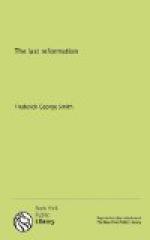The beast is described as a blasphemous power. Adam Clarke has stated that “blasphemy, in Scripture, signifies impious speaking, when applied to God; and injurious speaking, when directed against our neighbor.” A name of blasphemy would therefore properly signify the prostitution of a sacred name to an unholy purpose. An example of this kind is given in Rev. 2:9, where we read, “I know the blasphemy of them which say they are Jews, and are not, but are the synagog of Satan.” In this case certain wicked men blasphemed the name by calling themselves Jews, since according to Scripture ’he only is a Jew who is one inwardly.’ But to prostitute a sacred name to an unworthy use would be no more impious or blasphemous than would the assumption by man of those rights and prerogatives which belong to God alone. This the pope has done for ages. Among the blasphemous titles which he has assumed are these: “Lord God the Pope,” “King of the World,” “Holy Father,” “King of kings and Lord of lords,” “Vicegerent of the Son of God.” For ages he has claimed infallibility, and this claim became a dogma of the church when adopted by the General Council of 1870. Further, he claims power to dispense with God’s laws, to forgive sins, to release from purgatory, to damn and to save. To call the Roman Catholic Church the holy church of the Bible is to prostitute a sacred name to an unworthy institution. And to elevate a man to the place where “he as God sitteth in the temple of God, showing himself that he is God,” by claiming those prerogatives which belong to God only, is most flagrant blasphemy.
[Sidenote: A persecuting power]
“And it was given unto him to make war with the saints, and to overcome them: and power was given him over all kindreds, and tongues, and nations” (chap. 13: 7). Here we have a direct prediction of that reign of tyranny in the Dark Ages in which millions of people suffered martyrdom at the hands of papal Rome.
I am aware that many Catholics affirm that their church never persecuted, that it was the civil power that did this dread work of slaughter. We must remember, however, that the beast of Revelation 13 signifies the imperial and the ecclesiastical power in the closest union possible; for the beast appears as one, the two phases being represented by the combination of symbols from the two distinct departments of life—human and animal. In the seventeenth chapter we have the same distinct characteristics again set forth, but in a different combination, the beast appearing simply as a beast, thus representing the political power of Rome; while the ecclesiastical power is represented by a corrupt woman sitting on the beast and directing its course. In that description it is stated, “And I saw the woman drunken with the blood of the saints, and with the blood of the martyrs of Jesus” (verse 6). The Romish church itself is, therefore, represented as participating in the work of martyrdom.




